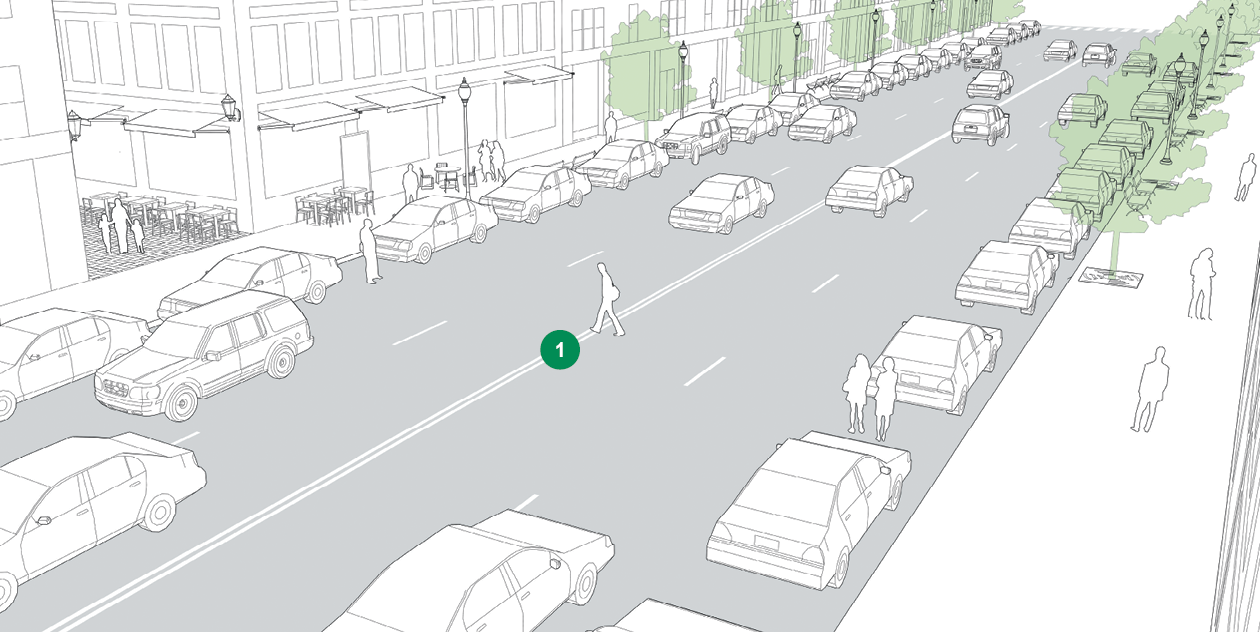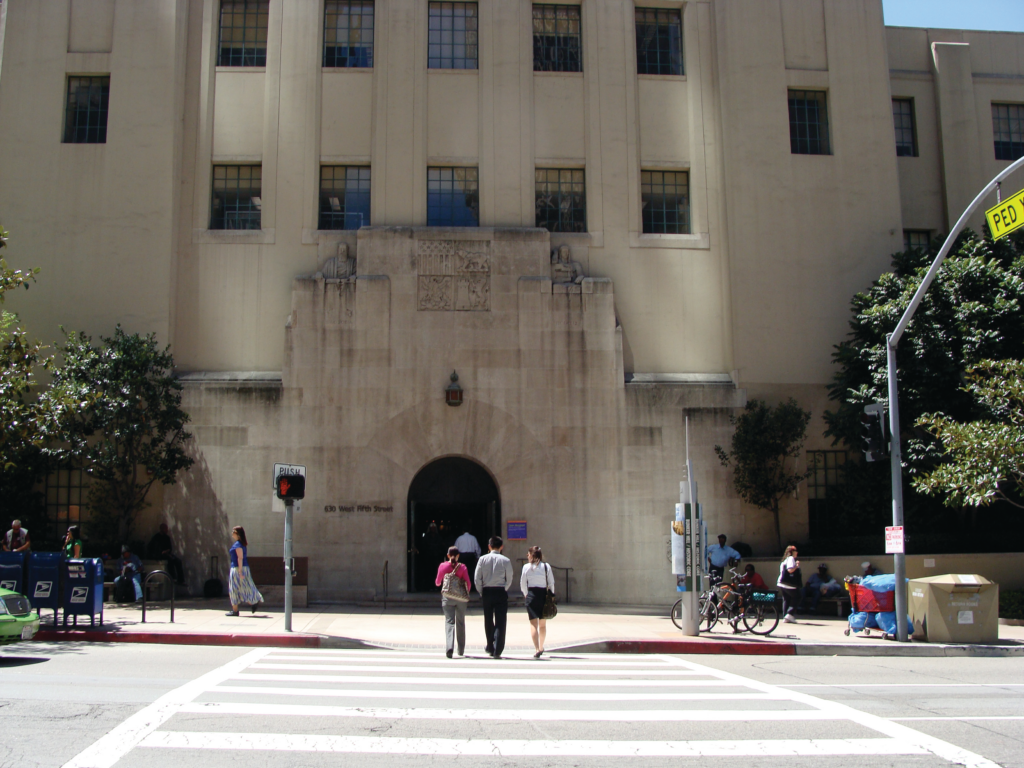Midblock crosswalks facilitate crossings to places that people want to go but that are not well served by the existing traffic network. These pedestrian crossings, which commonly occur at schools, parks, museums, waterfronts, and other destinations, have historically been overlooked or difficult to access, creating unsafe or unpredictable situations for both pedestrians and vehicles. Designers should study both existing and projected pedestrian volumes in assessing warrants for midblock crossings to account for latent demand.

Recommended
1Install a midblock crosswalk where there is a significant pedestrian desire line. Frequent applications include midblock bus stops, metro stations, parks, plazas, building entrances, and midblock passageways.
Vertical elements such as trees, landscaping, and overhead signage help to identify crosswalks and islands to drivers.

2Daylighting in advance of a crosswalk makes pedestrians more visible to motorists and cars more visible to pedestrians. This may be accomplished by restricting parking and/or installing a curb extension.
3Stop lines at midblock crossings should be set back 20–50 feet. This ensures that a person crossing the street is visible to the second driver when the first driver is stopped at the stop line.
4Stripe the crosswalk, regardless of the paving pattern or material. Otherwise, drivers are not likely to see it, especially at night.
5Medians or safety islands create a 2-stage crossing for pedestrians, which is easier and safer.
6At key access points to parks, schools, and waterfronts, and at intersections with local streets, raised crossings increase visibility, yielding behavior, and create a safer pedestrian crossing environment.
Where an unsignalized crossing exists at a transit stop, enhanced crossing treatments or actuated signals should be added. Transit stops should ideally be located so that pedestrians cross behind the bus or transit vehicle. Far-side stop placement is preferable to near side or midblock placement and increases the visibility of pedestrians crossing behind the bus.

Optional
A pedestrian tracking survey may be used to document where and how people cross a street, complex intersection, or plaza. This information is useful in locating crosswalks and safety islands, redesigning intersections, and understanding the interface between streets and the surrounding buildings and public spaces.
Actuated pedestrian signals (half-signals), hybrid beacons, or rapid flash beacons may be considered at greenway crossings, midblock locations, or unsignalized crossings where infrequent crossings make a traffic signal or stop sign unnecessary. Fixed-time signals or passive detection are preferable to push-button detection.
Unsignalized midblock crosswalks may be applied at locations with inconsistent pedestrian demand or where a pedestrian connector intersects midblock with a small or medium-sized roadway.
Unsignalized crossings should be highlighted using additional warning signage, high-visibility lighting and markings, actuated beacons (where applicable), and traffic calming features, such as raised crossings and midblock curb extensions.
Where midblock pedestrian crossings in a low-volume downtown commercial or neighborhood residential area are frequent, a designer may consider the application of a shared street treatment. Shared streets should have limited or no markings to reinforce the regulation of the street as a shared space.